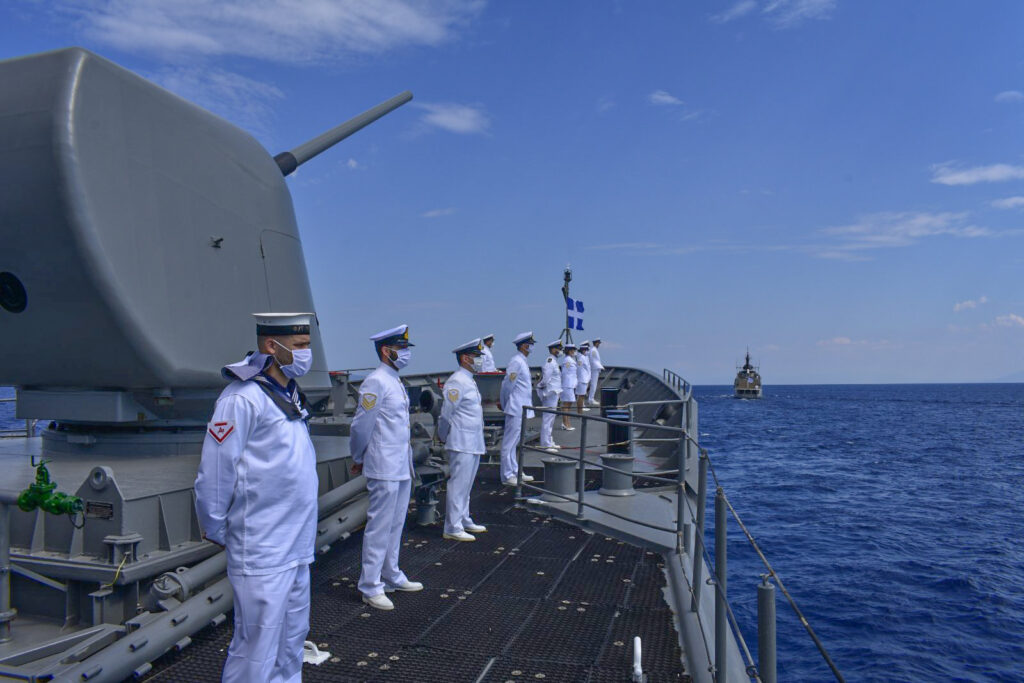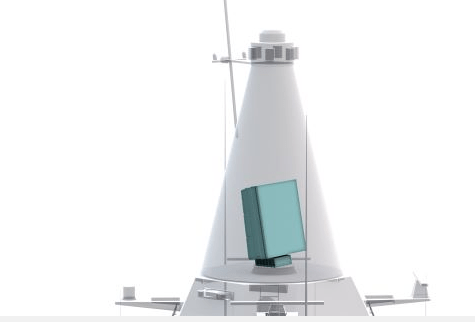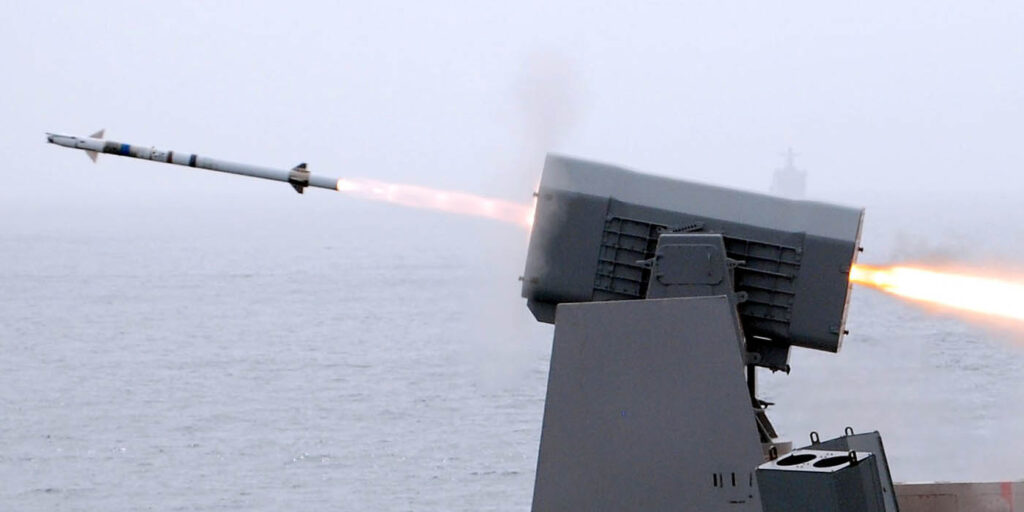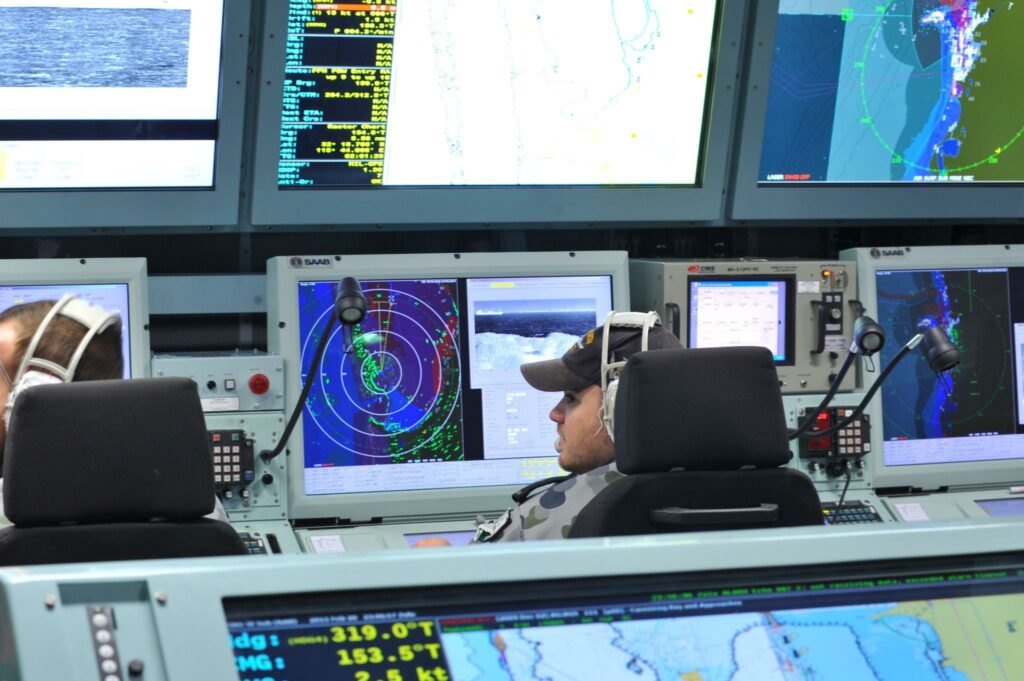The high quality and reliability of Swedish Saab Defence systems are practically recognised by the Navy. The reason is Saab’s Electronic Support System (ESM) which is installed on a number of MEKO 200 HN frigates operating in the Red Sea. Saab’s SME-150 ESM provides early threat diagnosis to the ship’s battle information centre and has been proposed by the Swedes as part of the Mid-Life Modernisation (MLM) of the MEKO 200 HEN frigates. According to the information, the Swedish system has been evaluated with distinction by the Navy staff and in a real threat environment such as that in the Red Sea. The Swedish system has recorded many real successes in the Red Sea maritime area and therefore should be considered “out of the box” as an option for the modernization of the MEKO 200HN frigates. Together with the Naval Laser Warning System (NWLS) threat warning receiver. Also hard.
The SME Systems Group offers solutions in the field of Electronic Support Media (ESM) and ELINT. As in the 9VL, the SME Systems are developed in different versions (SME-50/150/250) depending on the size of the ship, with the SME-150 being suitable for corvette and frigate class ships. The system has the ability to analyze signals even in a strong signal emission environment or in a shore environment. The SME uses a database to classify and recognize signals. Likewise, it also includes an ELINT intelligence gathering and analysis system. Equally important is the SME’s ability to integrate and control the ship’s self-protection systems, reducing response time.
One of the most competitive proposals for the modernization of the MEKO 200 HN frigates is from the Swedish company Saab. The Saab proposal is based on a very good cost-benefit solution for all frigates. At the tactical and electronics level, it proposes to replace the frigates’ main radar, a new tactical system, change the existing fire control radars, a new ESM system, and install a Naval Warning Laser System (NWLS) and electro-optical sensors. All necessary mechanical work is also included. It is reported that the weapons systems upgrade work is expected to be carried out by Raytheon and BAE Systems.
Saab has the required experience from its involvement in the Australian Navy’s frigate modernization programs. Some of the most common cases are the Australian MEKO-200 (ANZAC) frigate upgrade program, Canada’s Halifax-class frigates, and Thailand’s Tachin and Naresuan-class frigates.

The SEA GIRAFFE 4A AESA class radar was officially introduced in 2017 and is a very modern radar design. It can detect more than 1000 air targets and 500 marines, while the maximum distance deviation is less than 15 meters at the maximum range of 350 kilometers and the maximum speed deviation is less than 15 meters per second.
The Saab CEROS-200 fire control system has already achieved great commercial success with around 200 systems in service worldwide. It has a very fast response time and has proven to be highly effective in detecting targets. In addition, it has a low life cycle cost, due to its high reliability and availability. The CEROS-200 is an all-weather fire control system that operates day and night in the Ku band.
It incorporates electro-optical sensors, a day camera, an infrared camera, and a laser rangefinder, while using Chase-type algorithms. It can detect multiple targets and allows full use of the ESSM (Evolved Sea Sparrow Missile) system, the main anti-aircraft system in the Greek MEKO-200 system.
The CEROS-200 is a single-wavelength fire control system with an antenna power gain of 41 dBi. It has a maximum range of over 100 km and can engage at least four targets simultaneously.

Today the ships carry a Signalal MW08 radar and two Signaal STIR fire control radars allowing the ships to engage only two aerial targets with ESSM missiles.
In addition, it has the ability to warn and detect incoming projectiles, while being particularly resistant to electronic interference. It supports all ship guns as well as active or semi-active anti-aircraft guided missiles. It is an open architecture which means it can be easily and inexpensively upgraded.
In the surface target detection area, CEROS-200 can detect more than 500 targets while the maximum distance deviation is less than 20 meters and the maximum velocity deviation is less than 15 meters per second.
Battle Management System 9LV It is an integrated C4I (Command, Control, Communications, Computers and Intelligence) system, which can be adapted to any naval platform, small or large (from patrol boats to aircraft carriers and submarines). The system has been developed in three different versions, depending on the customer’s requirements: 9LV CS (Combat System), 9LV CMS (Combat Management System) and 9LV FCS (Fire Control System).

The 9LV CMS is the command and control center for a ship or submarine. Its modular design and open architecture allow for the selection of the appropriate solution and easy future upgrade at low cost. In its complete configuration, the 9LV CMS also includes the 9LV FCS. Thus, it not only provides a complete and comprehensive picture of the tactical situation, but also provides control over the ship’s weapons. It is lightweight, easy to install and has a low life cycle cost.
9LV CMS combines systems and software, in different configurations, depending on the requirements. The goal is to provide a complete picture of the tactical situation. System operators have a single, clear view of what is happening on the battlefield. This picture is presented with graphics, maps or understandable data. This complete picture is available to the ship’s captain, who can rely on it and make appropriate decisions, depending on his mission.

Between the process of collecting information and displaying it as a single image, there is a fully automated process of analyzing and synthesizing this information, within a secure IT framework. In short, the 9LV CMS controls all of the ship’s sensors and weapons while continuously evaluating information and data, allowing the system to respond to rapidly changing situations.

“Avid problem solver. Extreme social media junkie. Beer buff. Coffee guru. Internet geek. Travel ninja.”





More Stories
“Recycling – Changing the water heater”: the possibility of paying the financing to the institution once or partially
Libya: US General Meets Haftar Amid Tensions Between Governments
New tax exemption package and incentives for business and corporate mergers..